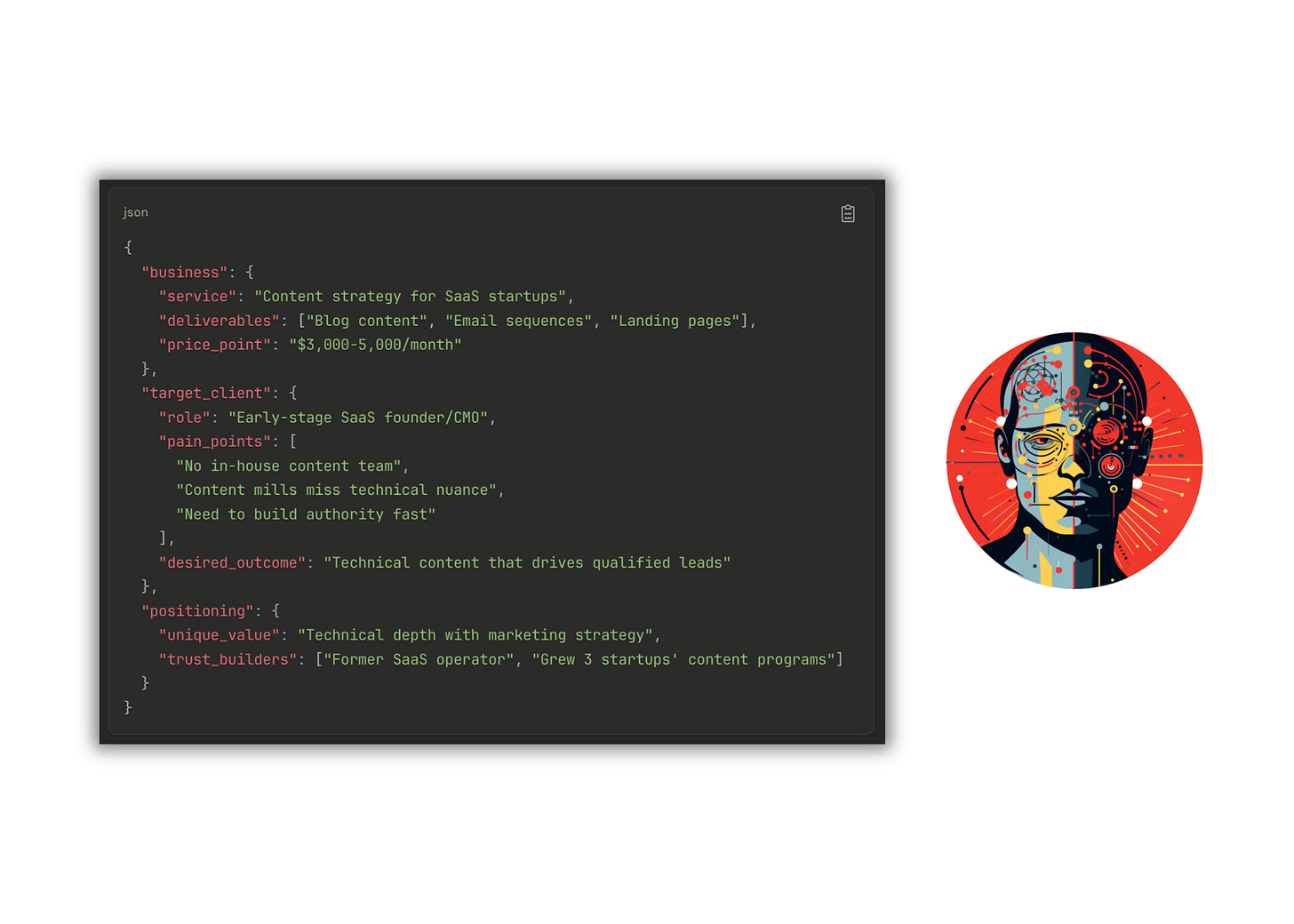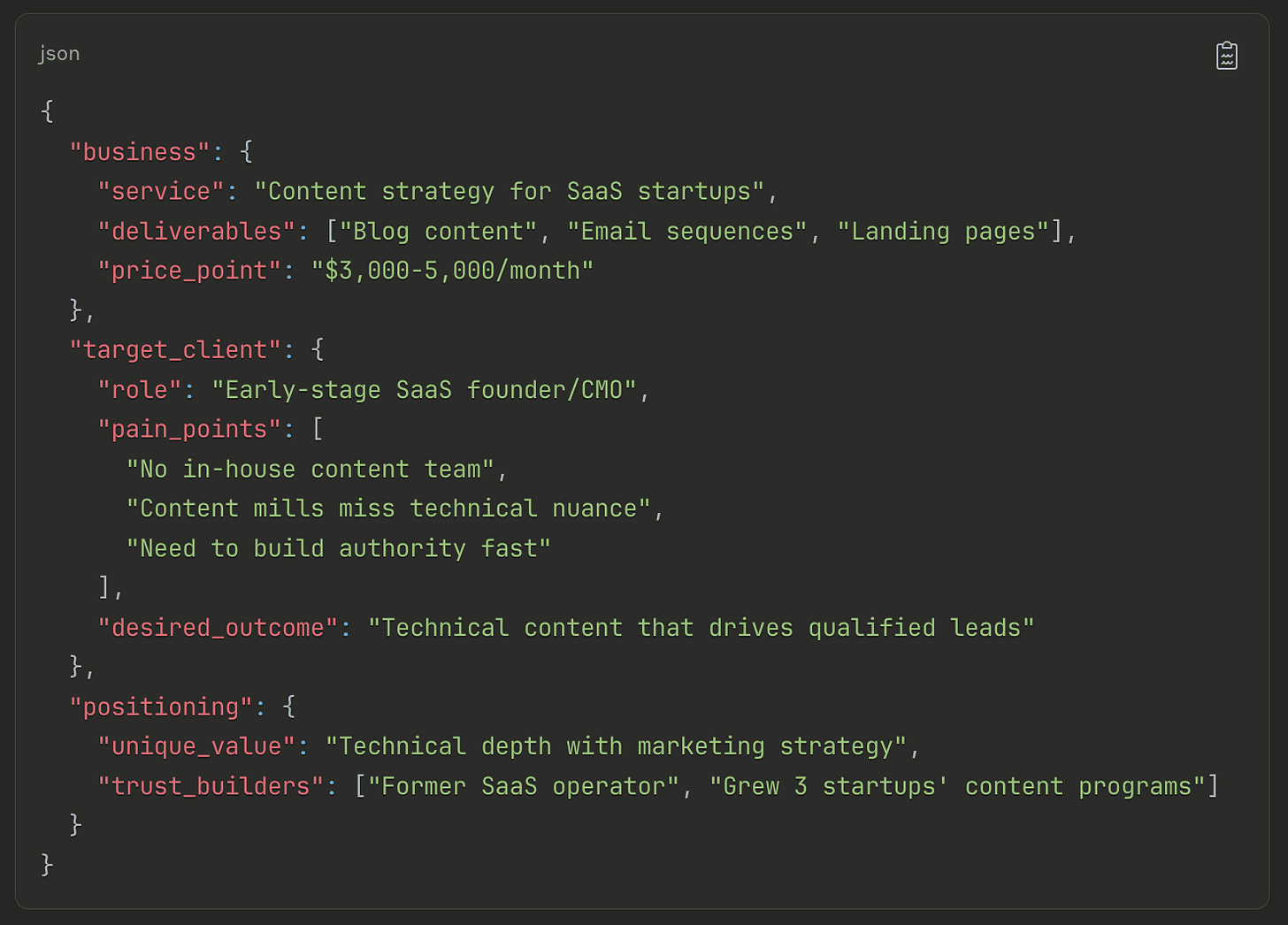Feed AI JSON, not paragraphs
One simple switch that makes AI outputs 10x more consistent
I'm about to show you the single most important thing I learned about making AI write like a professional.
It's not a better prompt. It's not a new tool. It's not some secret model.
It's this: Stop feeding AI unstructured garbage. Start feeding it JSON.
Let me show you exactly what I mean.
Most people do something like this when they want to tell Claude or ChatGPT about their business:
I'm a marketing consultant who helps SaaS startups with content strategy. I create blog content, email sequences, and landing pages. My clients are usually early-stage startups who need to build authority but don't have an in-house team. They've tried content mills or random freelancers but it never captures their technical expertise properly. I charge $3-5K per month for a content package.The AI reads this and... kind of gets it? But it's fuzzy. Unstructured. The AI has to guess what's important.
Here's what I do instead:
Same information. COMPLETELY different results. Especially when you start to load up more and more context.
Why? Because LLMs are pattern-matching machines. They parse structured data infinitely better than wall-of-text paragraphs.
Here's how to do this right now:
Take ANY context you repeatedly explain to AI - your business, your audience, your product, your framework, whatever.
Feed it to Claude with this exact prompt:
Convert the exact following information into a clean, structured JSON format that an LLM can easily parse and reference:Claude will structure it for you. Save that JSON.
Now, every time you need to reference this context, instead of rewriting paragraphs, you just attach the JSON at the start of your session or upload it to your project knowledge.
The results?
Content stays consistent across everything
AI stops making shit up about your business
You save 20 minutes per piece not re-explaining
Outputs actually sound like they understand your context
This is literally one of the foundations of an AI writing system. The others are:
ICP structures with data points
Voice DNA with multiple dimensions
Complete Project Instruction libraries
Universal Context Asset conversion
But this one thing - structuring your context as JSON - will immediately transform your outputs.
Try it today. Take one piece of context you always explain. Convert it to JSON.
When you see the difference, you'll understand why I built my entire system around context engineering.
— Alex
Founder of AI WriterOps
Founder of AI Disruptor




My personal experience has been that regardless of NPL capability every LLM prefers formatting. Markdown for the basics, JSON for light structure (basic data), XML for heavy structure (stepped processes, etc). XML being a bit of an odd-ball.
Possibly a dumb question, but how do you actually store and organise the JSON files you create? I've started structuring context with Obsidian but it feels a bit less smooth than I expected when it comes to handling JSON. Would love to know your workflow or any tips!